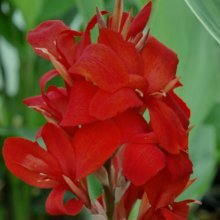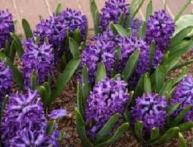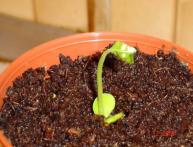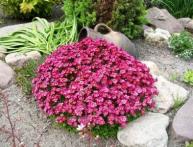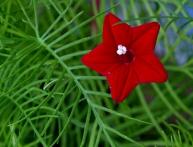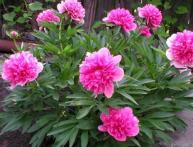Amazing canna flowers, growing, planting and caring for them
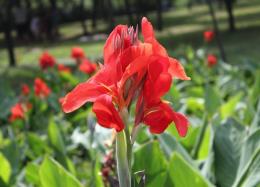
From mid-summer to the end of September, buds on tall, beautiful plants open on the streets of many cities. The flowers are large, most often red, yellow, orange, variegated and white. They attract attention with their size and shape. These are cannas in bloom.
However, besides the inflorescences, Cannes They also have very beautiful foliage; in addition to the traditional green color, there are cannas with variegated, purple, and bronze foliage. In their homeland, in South America, these herbaceous plants reach a height of up to 4 m, although there are species not taller than a meter. The rhizomes are powerful, with a high content of starchy substances; they were once used as food by the indigenous population.
Green ground parts are happily eaten by livestock. Today, about 50 species of cannas have been identified, which make up the genus Cannae. Let's try to figure out what they are, canna flowers, their cultivation and use in garden design and landscaping.
Content:
- Where to plant cannes, soil and light requirements
- How to plant cannas
- Basic techniques for growing cannas, preserving rhizomes in winter
Where to plant cannes, soil and light requirements
Primer for cannes
When choosing a place to plant cannas, you need to know that in their homeland these plants prefer to grow on fertile, humus-rich soils. Elands often occupy wet banks near streams and rivers.In the wild, these plants occupy places that accompany human life and grow in wastelands and landfills, where there is a lot of organic residue and the soil is rich in nitrogen.
In addition, some species of cannas are very aggressive weeds and love fertile agricultural plantations. It should be concluded that fertile soil, with deep cultivation and good moisture, is suitable for growing cannas. If the land where you plan to grow cannas has poor soil, then it needs special preparation.
Considering that the best time for planting cannas is spring, it is better to prepare a bed for it in the fall. To do this, dig up the earth using a bayonet, or better yet, a shovel and a half bayonet, while simultaneously introducing humus. 5 - 6 kg per 1 square meter is enough. m.
In addition, in the spring you can make a special “pillow” from fresh horse manure. To do this, before planting flowers, dig a ditch; its depth should be 70 - 80 cm. Lay out manure 20 cm thick. Cover it with a 25 - 30 cm layer of earth on top. After this, you can plant cannes. Manure will serve not only as fertilizer, but as a kind of warmer for cannas.
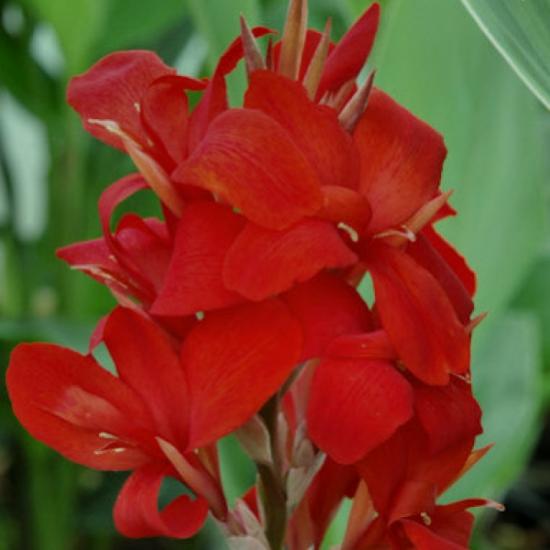
For canna, you need a well-lit place with sun. You should not choose the north side for them and an area that is open to all winds. When the location is chosen, the soil prepared, cannas can be planted.
How to plant cannas
Cannas should not be planted in frozen soil. They need to be planted at the very end of spring, and best of all at the beginning of summer, when not only the air, but also the ground has warmed up. Its temperature should be at least + 10 degrees. Cannas are propagated by rhizomes, which must be preserved in certain conditions in winter; this will be discussed below.
In spring, rhizomes need time to awaken.To do this, in March - April they are taken out of storage and kept in a cool room for some time. After which they are released from the ground. The old parts of the rhizomes are cut off, and too long roots are shortened to 5 - 6 cm. Then the rhizomes are divided into shoots, which can be freely separated from each other.
It is important to ensure that each part has several buds; it is advisable that a couple of them be well developed and the same number a little worse. Usually from one uterine rhizome you get from 3 to 5 parts suitable for landing. The cut areas should be sprinkled with wood ash or crushed charcoal and dried for two to three days. After this, you need to place the separated rhizomes in a box with sand and moisten everything well. After 10 - 12 days, the rhizomes awaken, young roots appear, and buds begin to grow.
Then the rhizomes can be kept in the same box until the leaves grow and begin to interfere with each other. If the time for planting in open ground has not yet come, then cannas are grown in greenhouses or greenhouses.
In open ground, cannas are transplanted into prepared holes with a depth of at least 15 - 20 cm. The distance between the holes should be from 40 to 80 cm. The rhizome is placed in the hole, all roots are covered with earth. When planting in the ground, the root collar should be buried 2 cm into the ground. The soil is lightly compacted, and the plant is watered with warm water. The amount of water should be at least 5 - 10 liters per plant. In the first weeks, caring for young cannas involves watering and loosening the soil.
Water for irrigation must be warm, + 25 + 26 degrees. Once the cannas have taken root, they can be fed with any liquid organic fertilizer or diluted with bird droppings.To do this, 1 kg of litter is soaked in 10 liters of water for two to three days, after which it is diluted again 1 to 10 and the flowers are watered with this solution. 0.5 liter is enough for one plant. In order for cannas to please with their flowers, they need to be provided with proper care during growth, and in order to have something to plant in the spring, they will also need to be properly cared for store rhizomes in winter.
Basic techniques for growing cannas, preserving rhizomes in winter
Top dressing
To ensure normal growth and flowering, cannas are fed once every two weeks. If it is not possible to breed natural droppings, then 20 g of nitroammophoska can be diluted per bush.
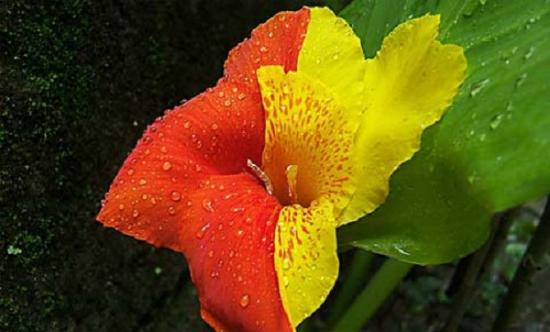
As soon as the buds begin to appear and open, a handful of wood ash is added under each bush. During the season you need to carry out at least two nutritional sprays. This fertilizing is carried out after sunset with a solution of mineral fertilizer for flowering crops.
Watering
Cannas love moist soil, so in dry summers they need additional watering. Considering that the area of canna leaf plates is large, on hot and dry days cannas lose moisture very quickly. They need to be watered without allowing the soil to dry out completely. As a rule, this needs to be done once every 2 days. After watering the soil mulch.
Preparing cannes for winter, storing rhizomes
At the end of September, without waiting for low temperatures, the above-ground parts are cut off, leaving 20 - 25 cm above the ground. The cut plants need to be slightly hilled. This will protect the root collar from sudden frost. In early October, the rhizomes are dug up. They do this together with a lump of earth. They are stored, sprinkled with sand, in cool basements, where the temperature is + 6 + 8 degrees. The sand is periodically moistened, and rotten rhizomes are removed.
In addition, it must be said that in their homeland, cannas do not have a dormant period and bloom almost continuously, so their low-growing varieties can be grown in containers, taken out into the garden in the summer, and taken into the room on the windowsill in winter. In open ground, cannas can be grown in groups; they combine well with other plants. Cannas in containers can be used for landscaping a pond by installing them at a shallow depth.
Video about proper storage and planting of cannas:

